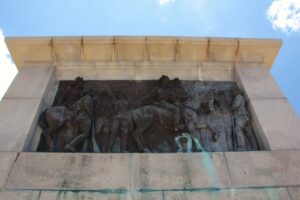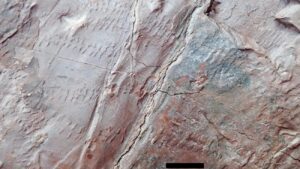Nestled in the heart of Zimbabwe, Matopos National Park is a captivating blend of natural beauty and historical intrigue. Known for its stunning rock formations and rich biodiversity, the park is also home to the grave of Cecil Rhodes, a significant figure in Southern African history. This site offers visitors a unique opportunity to explore both the natural wonders and the historical narratives that shape this region.
What to See
Matopos National Park is renowned for its dramatic granite hills and balancing rocks, which create a breathtaking landscape. The park is a haven for wildlife enthusiasts, offering sightings of white and black rhinos, leopards, and a variety of bird species, including the rare black eagle. The highlight for many visitors is the World’s View, a panoramic vantage point where Cecil Rhodes chose to be buried. The view from this spot is nothing short of spectacular, offering sweeping vistas of the surrounding hills and valleys.
In addition to the natural scenery, the park is dotted with ancient San rock art, providing a glimpse into the lives of the region’s earliest inhabitants. These paintings, some of which are thousands of years old, depict scenes of hunting and daily life, offering a fascinating insight into the past.
A Bit of History
Cecil Rhodes, a British businessman and politician, played a pivotal role in the colonization of Southern Africa. His influence extended across the region, and his legacy is both celebrated and contested. Rhodes was so enamored with the beauty of Matopos that he chose it as his final resting place. He was buried here in 1902, and his grave remains a site of historical significance.
The park itself was established in 1953 and is one of Zimbabwe’s oldest national parks. It was designated a UNESCO World Heritage Site in 2003, recognizing its cultural and natural importance. The park’s history is intertwined with the stories of the Ndebele people, who have lived in the region for centuries, and the colonial history that followed.
Interesting Facts and Visitor Information
- The name “Matopos” is derived from the local Ndebele word “matobo,” meaning “bald heads,” a reference to the smooth, rounded granite hills that dominate the landscape.
- Cecil Rhodes’ grave is marked by a simple stone slab, inscribed with the words “Here lie the remains of Cecil John Rhodes.”
- The park is home to one of the largest concentrations of leopards in Africa, making it a prime location for wildlife photography.
- Matopos is also a spiritual site for the local communities, who hold ceremonies and rituals in the hills.
For first-time visitors, it’s important to note that the park is accessible by road from Bulawayo, Zimbabwe’s second-largest city, located about 34 kilometers away. The journey takes approximately 45 minutes by car. Visitors can hire a guide at the park entrance to enhance their experience, as guides can provide valuable insights into the park’s history and wildlife.
When visiting, it’s advisable to wear comfortable walking shoes and bring plenty of water, as exploring the park involves some hiking. The best time to visit is during the dry season, from May to October, when the weather is cooler and wildlife is easier to spot.








